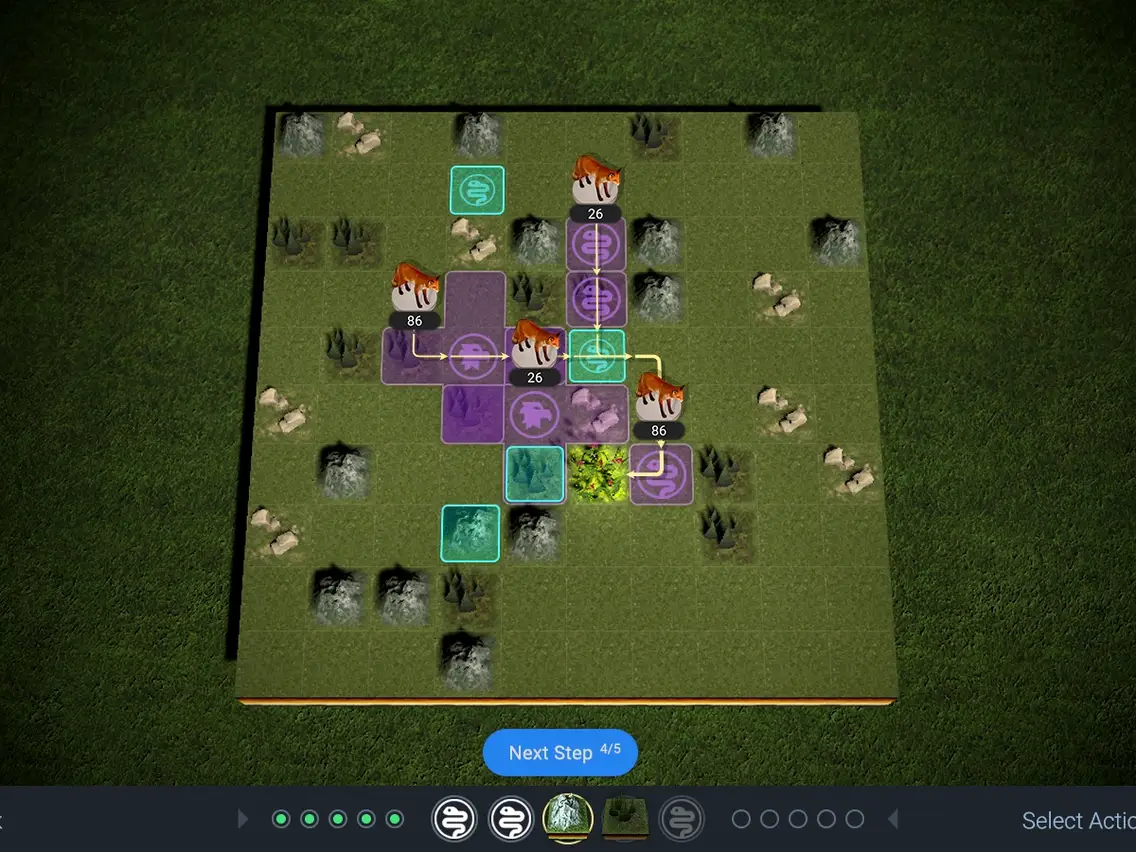Plant Defense is another major minigame in the McKinsey Solve Game (or informally the Imbellus). Its gameplay is similar to a popular video game, “Plants vs. Zombies,” so it’s quite easy to learn compared to the Ecosystem Building game. However, you will need much more information to succeed in the game.
This article will give you all the details a candidate should know about the Plant Defense game, including its most challenging aspects and several tried-and-tested strategies to pass it.
A Brief Introduction to The Plant Defense Game
Plant-Defense, the second mini-game in the McKinsey Problem-Solving Game, is a tower-defense game with a turn-based system. You are asked to defend a native plant against invasive species on a series of progressively more complicated maps.
The game has three maps, each with two phases: the “planning phase” and the “fast-forward phase.”
- The “planning phase”: every three to five turns, a fresh stack of invaders appears at the edge of the map and begins moving toward the central base; you must prepare defensive units to deal with them.
- The “fast-forward phase”: happens after the 15th turn. The remaining Invaders from the planning stage will all carry out their initial attacks. You won’t be able to change your defense unit layout or strategy.

Image Source: Business Insider
Your objective is to survive a set number of “turns” on each map (five to start with). You must use various tools (such as terrain barriers and the introduction of predators) to eradicate the invasive species or obstruct its path toward your native plant for as many turns as possible. At the same time, new groups of invasive species can appear in other parts of the map. If this happens, you can change your current plan to help the native plants stay alive.
Your product score is determined by the turns you managed to survive. Your process score is determined by how well you respond to attackers’ shifting behaviors and how much you can learn and adapt throughout the turns and the three rounds.
The recommended time for the game is 12 minutes for each stage, for a total of 36 minutes.
The Plant Defense Game’s Main Challenges
In the Plant Defense game, there are two main problems that players often struggle with: information overload and time management.
- Information overload: Due to their varied functions, some tools can be confusing to players. Their manuals are often difficult to read and comprehend, taking up unnecessary time. The stats for the animals can vary depending on their sphere of influence (represented by squares) and the damage they can deal to intruders.
- Time management: in this minigame, you must make decisions based on minimal information and deal with unexpected problems. So before beginning the game, use the untimed tutorial to brainstorm the tool combos and arrangements that will be most effective.
Best Strategies to Pass The Plant Defense Game
There are several game methods that players can use: long-term planning, fill in the blanks and using multiple layers of protection from the inside out.

Long-term Planning
When playing the Plant Defense game, it’s important to look at the big-picture and not get caught up in specific points. Consider asking yourself what your long-term plan entails and how you intend to carry it out.
For example,
- Should you set up preventive blocks for potential new invaders?
- Should you obstruct access to the terrain on the plant’s right side?
- Is it better to surround the plant with predators entirely?
Strive for a middle ground between long-term and short-term goals. Make calculated decisions that will shield the plant from nearby invaders while also averting potential risks. Don’t focus too much on eliminating a single invasion force or ignoring recently arrived ones.
Use your resources wisely and build an all-around defense for the plant because imbalanced defenses (heavy in one direction but weak in others) won’t last very long, and the goal of this mini-game is to last as long as possible.
Fill in the Blanks
At the beginning of the game, you won’t have all of the information, and your perspective is still quite straightforward and simple; maybe you don’t know when new predators will appear or how your terrain interacts with other predators. So it’s crucial that you understand the interaction rules for the game’s world and its internal structures.
For instance, you can place a predator on a forest or bare land that reduces the population of the invading species by 10 units per turn. The forest will cause the invasive species to move more slowly for one turn, allowing the predator to eat for two turns rather than one. The unspoken rule is that you must put the forest before the predator and cannot do the opposite.
Multiple layers of protection from the inside out
In this method, the innermost layer of the map is given priority first, and then the outer layers.
Start by positioning your resources close to the plant. This enables you to maximize the coverage of each resource around the plant early on. With this strategy, position your most effective assets closest to the plant before extending with your weaker but farther-reaching resources.
Be sure to distribute the Defenders’ strength equally in all directions. Make a quick calculation in your head to determine each defense’s strength to determine if any are too strong or too weak.
That was everything you need to know about McKinsey Solve’s Plant Defense game. If you want to find out more, experience the game yourself!
